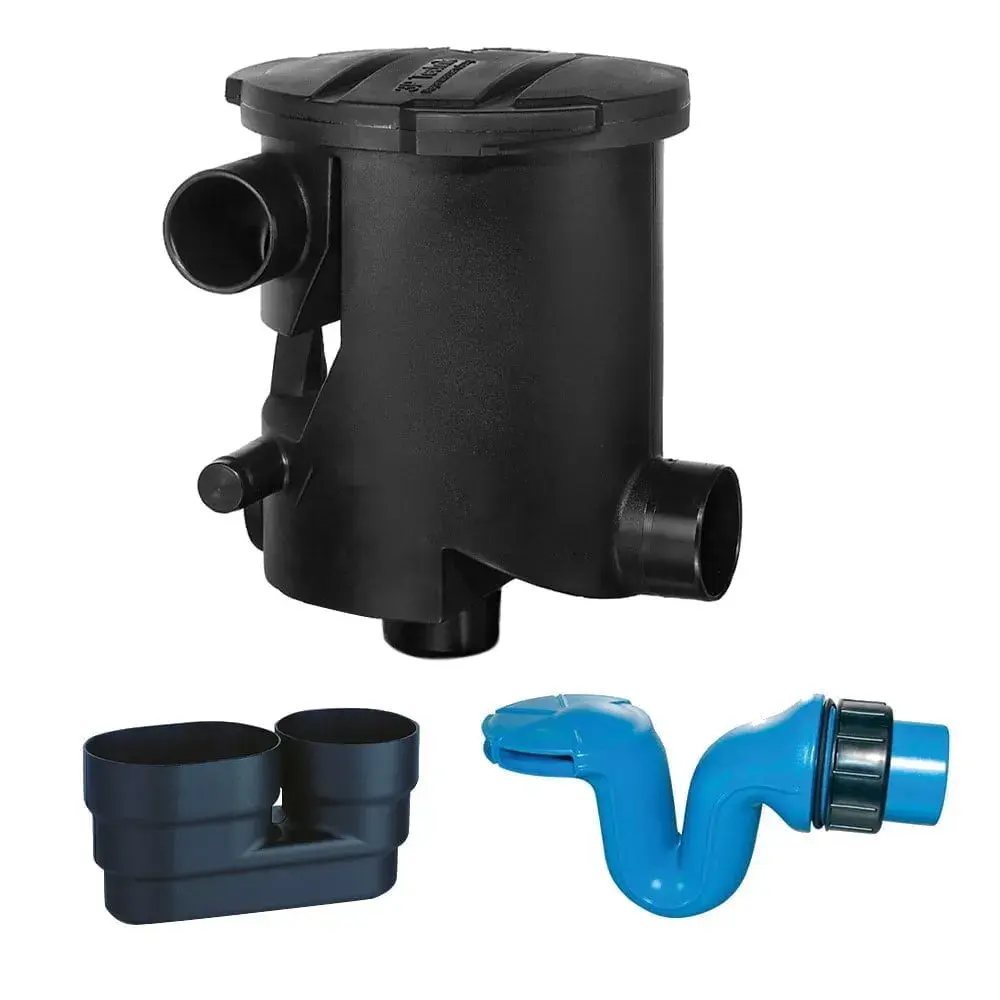Summary of the DAF process:
- In the feed stream, after saturation with dissolved air, the flow spreads uniformly across the tank.
- The air bubbles adhere to the suspended particles creating a floating action on these particles. These solids are removed using a scum removal system.
- Heavy solids which might have settled are conveyed into a sump by the bottom scraper.
Dissolved Air Flotation Process Steps
pH Correction and Flocculation The feed pump takes flooded suction from the raw water tank and pH (if required) of the raw water is adjusted inline, based on pH transmitter reading, so as to optimize conditions for downstream removal of contaminants in the flocculation and clarification stages. Typically ideal pH is in the slight alkali range (8-9) but the final set point is determined during commissioning. Once the pH correction process is completed, two flocculation chemicals, a coagulant and flocculant are injected into the wastewater in preparation for the clarification process. The flocculant retention tube is designed to allow sufficient mixing time before the water is discharged into the DAF. All chemical storage tanks are fitted with a low-level switch for auto-shutdown & to alert the operator of a low-level condition; the tank levels should be checked regularly and topped up as required
DAF Clarification The dissolved air flotation (DAF) clarification stage separates the flocculated particles (suspended solids) from the water. A pressurized stream of air-saturated water is mixed with the flocculated water and, with the release of pressure, a cloud of very fine air bubbles carries the contaminates to the tank surface. Clean water overflows from the DAF tank, via an under-weir, to the sewer or clarified water tank for the next treatment step. The overflow level is adjustable and controls the level in the DAF flotation section. Where practical (e.g. where additional filtration is included) treated water can be used for saturator feed water, otherwise, potable water is used.
Sludge Removal A low-speed scraper, mounted on top of the DAF, continually moves this surface sludge layer over a ‘beach’ plate and into a skip prior to removal and off-site disposal. If a sludge pump is installed this can transfer the sludge to a holding tank for liquid waste disposal. In this process, clarification and thickening happen at the same time. Separation of solids and FOG from the aqueous liquid stream occurs to produce a clarified effluent with low suspended solids & FOG levels.
Drinking water supplies that are particularly vulnerable to unicellular algal blooms and supplies with low turbidity and high colour often employ DAF. After coagulation and flocculation processes, water flows to DAF tanks where air diffusers on the tank bottom create fine bubbles that attach to floc resulting in a floating mass of concentrated floc. The floating floc blanket is removed from the surface and clarified water is withdrawn from the bottom of the DAF tank.
Applications for dissolved air flotation systems include;
- Drinking water intake;
- Wastewater treatment;
- Desalination;
- Process water production;
- Industrial zones
DAF solutions are part of the primary treatment solutions, such as screens, flocculation/coagulation, polymer make up systems and gravity separators such as clarification tanks.
Posts By Topics
- Blog (303)
- Chemical Storage Tanks (118)
- Chemical Dosing Tanks (114)
- Chemical Tanks (114)
- Water Tanks (58)
- Rainwater Harvesting Tanks (43)
- Vertical Rainwater Tanks (31)
- Vertical Storage Tanks (31)
- Cone Bottom Tanks (19)
- Conical Cone Tanks (18)
- Rainwater Harvesting (17)
- Water Bowsers (15)
- Horizontal Tanks (14)
- Potable Water Tanks (13)
- Farming (9)
- Case Studies (8)
- Industrial Storage Tanks (7)
- Liquid Fertilser Storage Tanks (6)
- WRAS Approved Potable Tanks (6)
- Wine and Beer Production (6)
- Horizontal Transport Tanks (5)
- Microbrewery (5)
- Rainwater (5)
- Category 5 Break Tanks (4)
- Cider Production (4)
- Mixer Tanks (4)
- Molasses Tanks (4)
- Polyethylene tanks (4)
- Rainwater Filter Kits (4)
- SPECIALIST & BESPOKE TANKS (4)
- Bunded Tanks (3)
- Slimline Tanks (3)
- WRAS Approved (3)
- Clarification Tanks (2)
- Crosslinked Polymer Tanks (XLPE) (2)
- Fertiliser Tanks (2)
- Sump Tanks (2)
- Tank Installation (2)
- Water Butt (2)
- underground water tanks (2)
- ACCESSORIES & FITTINGS (1)
- ATV & UTV SPRAYING UNITS (1)
- Above Ground Effluent Tanks (1)
- Bespoke Tank Frames (1)
- Category 5 Turret (1)
- Caustic Soda Tanks (1)
- Closed Top Bunded Tanks (1)
- Craft beer (1)
- Effluent Tanks (1)
- Enduramaxx (1)
- Ferric Chloride Tanks (1)
- Fire Safety Regulations (1)
- Fire Sprinkler Water Storage Tanks (1)
- Industrial Water Tank (1)
- Open Top Bunded Tanks (1)
- Open Top Cone Tanks (1)
- Open Top Vertical Tanks (1)
- Polyethylene Potable Water Tanks (1)
- Polyvinylidene Fluoride (PVDF) Tanks (1)
- Polyvinylidene Fluoride Tanks (PVDF) (1)
- Pressure Washers (1)
- Pro Series Spot Sprayers (1)
- RWH (1)
- Sodium Hydroxide Storage Tanks (1)
- Sprayer Fill-up Tanks (1)
- Uncategorised (1)
- liquid fertiliser tank (1)
Sign up to the newsletter
enduramaxx.marketing
Related Posts
Secondary Containment for Chemical Dosing
Secondary Containment for Chemical Dosing bunds is manufactured by Enduramaxx to increase the...
Water Storage For Farm Fires, Static & Transport Tanks
Any farmer will be aware of the risk of farm fires. Farm fires are probably one of the worst things...
Mixing for Dissolved Air Flotation (DAF) Systems | Enduramaxx - Manufacturers of Polyethylene Tanks
Mixing for Dissolved Air Flotation (DAF) Systems, Enduramaxx is often called on for its process...
Related Products
From £1,080.00 inc. VAT
£900.00 exc. VAT
From £1,344.00 inc. VAT
£1,120.00 exc. VAT
From £768.00 inc. VAT
£640.00 exc. VAT
£480.00 inc. VAT
£400.00 exc. VAT





